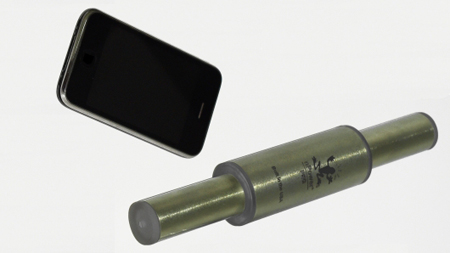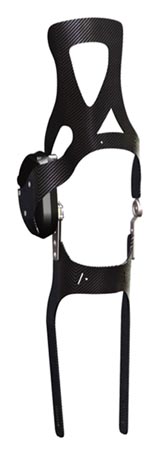Kinetic energy–from the Greek word kinesis, meaning motion–is energy supplied by moving things. Wind turbines make use of kinetic energy in the form of wind, while water-wheels and other forms of hydropower (including wave power) make use of the movement of water. Lately, however, a whole new class of devices has evolved to harvest electricity at a smaller scale, mainly from the movements of human beings.
These kinetic energy devices use various forms of good old-fashioned elbow grease to power portable electronics and/or provide emergency juice, grid-free. There are kinetic chargers that harvest the energy of your habitual everyday motions, such as biking or walking, and those that must be hand-cranked or shaken to generate power. These products have largely entered the market under the aegis of emergency back-up power–for flashlights, cell phones, etc.–but are increasingly found with camping and green lifestyle-oriented products as well.

The nPower Personal Energy Generator (PEG) is one of the most well-known kinetic chargers, designed to power portable electronic devices and having been covered by the likes of Forbes.com and Bloomberg Businessweek. This canister-like device was designed to sit vertically in a backpack or briefcase and generate electricity while you run or walk.
How much juice, in general, can one expect from a device like this? According to Jill LeMieux, Vice-President of Marketing for Tremont Electric (the company behind the nPower), the answer depends on what, exactly, you need to charge. With an energy-efficient portable like the iPod Nano, one minute of walking with nPower PEG in your backpack, briefcase or purse will give you one minute of listening time. For more energy-hungry devices such as the iPhone, however, you’ll have to walk approx 15-20 minutes to extend your talk time by one minute.
Despite such drawbacks, kinetic chargers such as the nPower offer advantages over solar chargers in that they can produce energy in any type of weather and harvest energy passively, especially for those who regularly walk or run. They also make a whole lot of sense on backpacking trips, where emergency power can be crucial and walking is a way of life.
Another kinetic charger that harvests the energy of walking or running is the PowerWalk by the Canadian company Bionic Power. This device, developed in conjunction with the Canadian Royal Mounted Police, looks somewhat like a knee-brace and was designed specifically for military and first-responder applications. The energy harvester is mounted on an orthopedic brace, weighs less than 2 lbs per leg, and gathers power from the braking portion of a person’s stride, similar to regenerative braking in a hybrid car.

According to Yad Garcha, CEO of Bionic Power Inc., the amount of power that the PowerWalk can produce is an order of magnitude more than many of the other harvesting devices, producing and average 12 watts of power from walking and 20+ watts while walking downhill. “This is a lot of power for most users,” he told us. “The average cell phone user does not need that type of power.”
For this reason, dismounted soldiers and first responders needing power for two-way radios and other such high-powered devices comprise the main market for the Powerwalk. However, the company also seeks to serve the global market for off-grid power, in light of the fact that over 2 billion people worldwide have no access to power, and the Powerwalk can produce enough power to light up a home for several hours with LED lights.